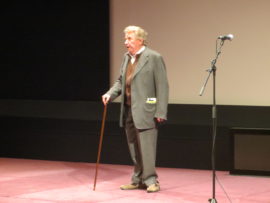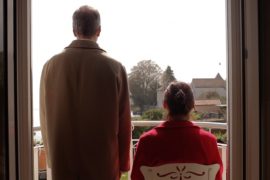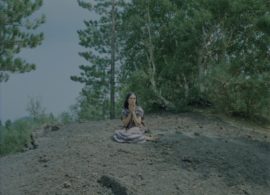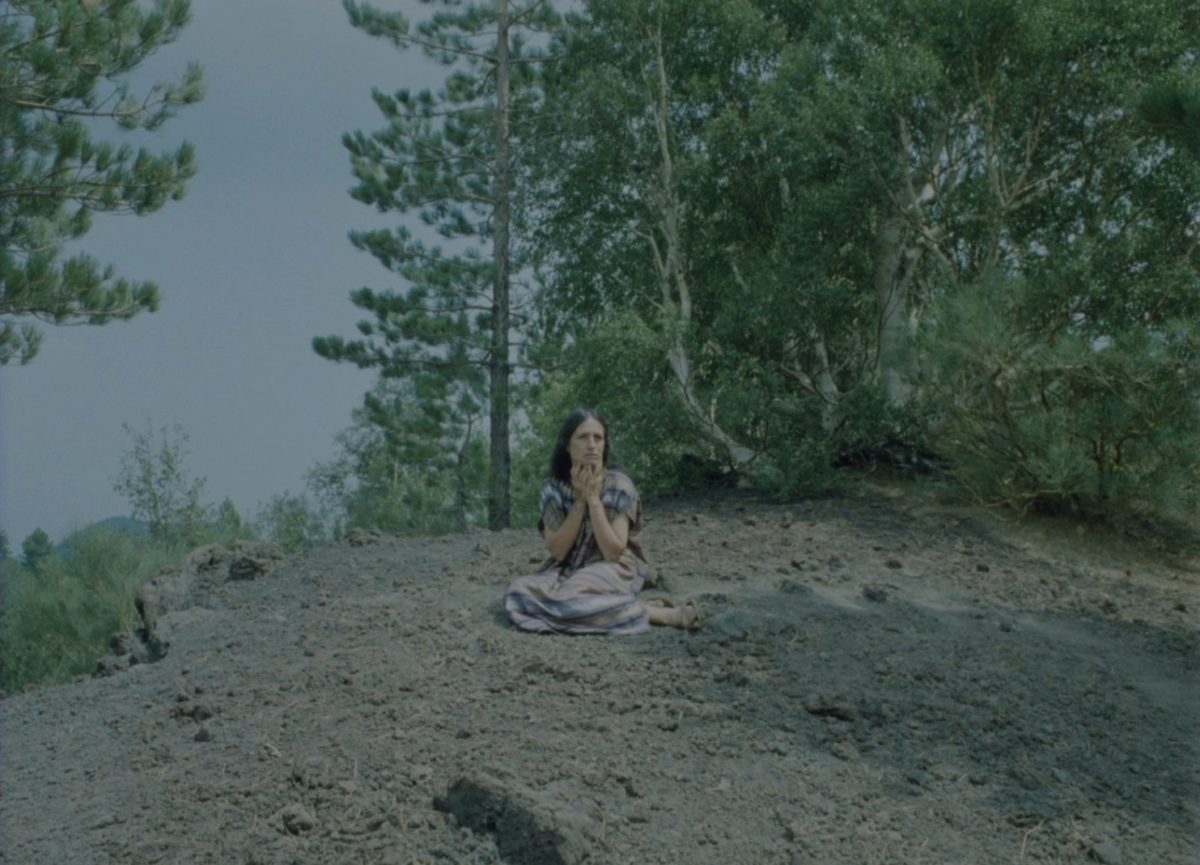At 81, living legend Jean-Marie Straub recently presented his new feature film Kommunisten at the Cinémathèque française in Paris. Kommunisten opens with the most elementary manifestation of Gilles Deleuze’s concept of maximum opacity in cinema: a completely black image. This image is held for several minutes and is accompanied by Auferstanden aus Ruinen, former East Germany’s national anthem. The prologue of the film thus clearly illustrates what Straub himself puts forward as the film’s two main goals. The first goal is to make a film about communism, or to make communist art. In Straub’s vision, this implies a strong and direct political message, which is offered throughout the film by literally citing politically engaged texts from various authors (André Malraux, Elio Vittorini, Mahmoud Hussein, Franco Fortini and Friedrich Hölderlin). The second goal is to strive towards a cinema that enables the spectator to dream, in contrast with the dominant overtly explicit cinema that blocks dreaming (such as, dixit Straub, the virtuosity of Orson Welles’ The stranger (1946)). By suggesting the action rather than showing it, Straub invites the spectator to let his imagination work, to dream and to search autonomously for meaning. This is further emphasized by adopting a radical minimalist and often reserved film style including minimalist settings, long, immobile or repetitive takes, direct sound and the reading out loud of (long) text fragments. During his introduction to the film, Straub mumbled Il sogno di una cosa, il sogno di una cosa… (the title of Pier Paolo Pasolini’s first novel), thereby dropping a hint that the symbiosis of the two mentioned goals can be found in an 1843 letter of Karl Marx to his friend Arnold Ruge, in which he writes that “the world has long dreamed of possessing something of which it has only to be conscious in order to possess it in reality.” For Straub, the communist dream is today more topical than ever.

The two described cinematic strategies (the literal use of politically inspired texts and a particular, austere film style) are very reminiscent of most of Straub’s filmography (which he largely shares with his wife Danièle Huillet). This should not come as a surprise: five of the film’s six components are fragments from earlier films he made. Only the first – and longest – part, ‘Le temps du mépris’, is newly filmed material. ‘Le temps du mépris’ is based on French writer and politician André Malraux’s novel of the same name and shows the interrogation of two communists. The two men are filmed diagonally with a stable camera, as they’re standing before a bare wall that catches their shadows; mise-en-scène, sound, cinematography and editing are almost completely stripped. At the end of the interrogation, there is talk about torture, but it isn’t shown. Instead, the black image reappears for some time, after which we see a balcony, with one of the two men standing next to a sitting woman. They are filmed from the back and the woman starts the conversation: “Comment c’était? – Terrible!” This may sound very much in line with the well-known ‘Straub & Huillet signature’, but by putting so much emphasis on this radical film style, I felt it lost some of the subtlety that was present in earlier films.

The second part of the film, ‘L’espoir’, is a fragment of Operai, contadini (2001), in which three actors stand in a forest and read a text of the Italian communist writer Elio Vittorini. In ‘Le peuple’, a fragment of Trop tôt/trop tard (1982), an endless stream of people leaves and enters a factory, partially accompanied by a text by the Egyptian author duo Mahmoud Hussein. This is Straub’s version of the Lumière brothers’ La sortie de l’usine (1895) – at the same time referring to the beginning of cinema, the resemblance between the early Lumière film style and Straub’s film style, and to a key feature in communist criticism. The fourth part, ‘Les Apuanes’, is a fragment of Fortini / Cani (1976) and shows a repetition of topographic, nearly 360° panning shots of the Apuan Alps region, while a text by the Italian Marxist writer Franco Fortini recounts the Nazi cruelties in France and Italy. In ‘L’utopie communiste’, a short fragment of Der Tod des Empedokles (1987), a text of the German Romantic writer Friedrich Hölderlin is cited – communism as poetry according to Straub.

Together the various parts form a select history of the 20th century, which is closed by a sixth part called ‘Nouveau monde’, a fragment of Schwarze Sünde (1989). It shows a beautiful, lyrical image of Danièle Huillet sitting on a slope, expressing profound feelings of expectancy and insecurity at the same time. Then, abruptly, she turns her head (to another, new place? to the future?) and asks: “Neue Welt?”By ending the film at this point, Straub pays an ultimate tribute to his partner in work and life who died in 2006. Such a personal note is very uncommon in Straub’s filmography. At the same time, however, this ambiguous image of Huillet – full of melancholy and hope – is perfectly interwoven with Straub’s goals: to approach a communist dream.
